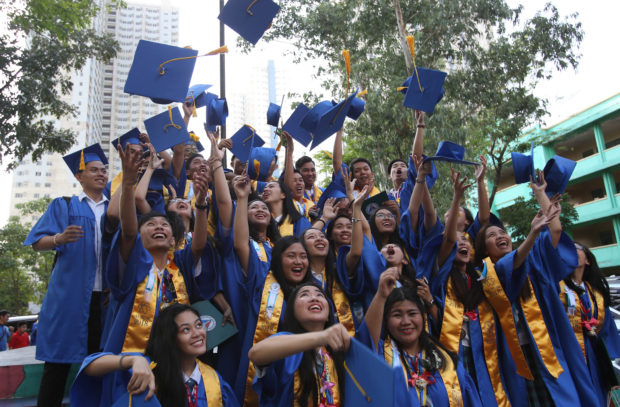
PIONEER GRADS Students of Quezon City Science High School cheer and toss their graduation caps on April 6 during commencement rites after finishing Grade 12 under the new K-12 enhanced basic education program. —JOAN BONDOC
The K-12 program, established by law in 2013, comprises 13 years of basic education in four stages: Kindergarten to Grade 3; Grades 4-6; Grades 7-10 (junior high school); and Grades 11-12 (senior high school).
Senior high school (SHS) students take a core curriculum plus applied track and specialized subjects based on the track or discipline of their choice: academic, technical-vocational-livelihood (TVL), sports, and arts and design.
Among the tracks, only academic and TVL have strands or subcategories. The academic strands are accountancy, business and management (ABM); humanities and social sciences (HUMSS); science, technology, engineering and mathematics (STEM); prebaccalaureate maritime; and general academic.
The TVL strands are agrifishery, home economics, information and communications technology, industrial arts and TVL maritime.
There are at least 15 core curriculum or general subjects, which aim to advance learning in English, Filipino, humanities, mathematics, science, mass media and well-being.
Applied track subjects, which are adapted to a particular track and strand, include English for academic and professional purposes; practical research (qualitative and quantitative); Filipino; empowerment technologies; entrepreneurship; and inquiries, investigations and immersion.
A senior high student will take at least 33 subjects, each totaling 80 hours, divided into four semesters in two years.
Students choose their track and strand after undergoing assessments like aptitude test, career assessment exam and career advocacy activities.
The law states that beginning school year 2016-2017 all must go through Grades 11 and 12 to graduate from high school. —Inquirer Research
SOURCE: DEPARTMENT OF EDUCATION